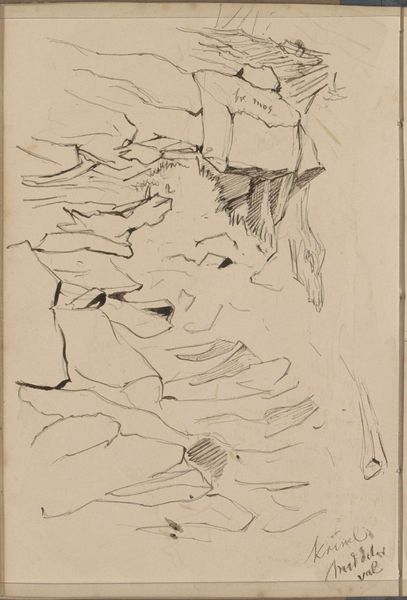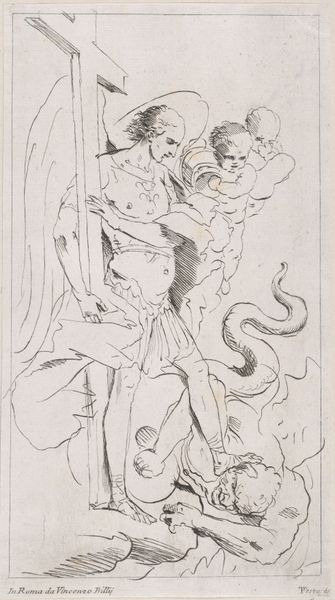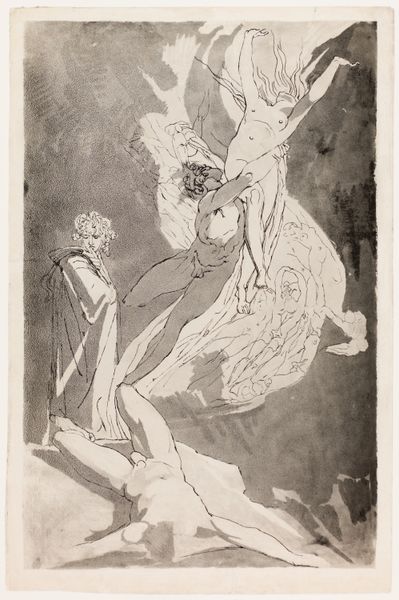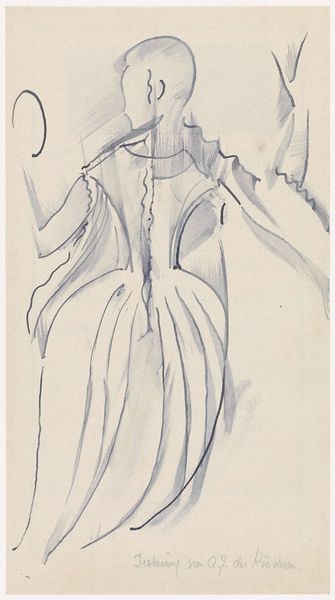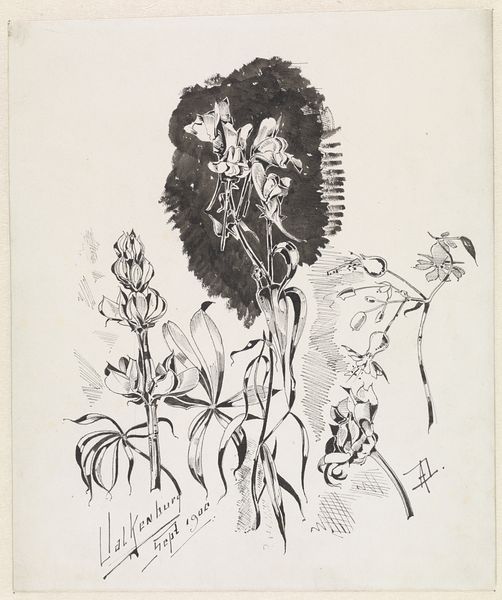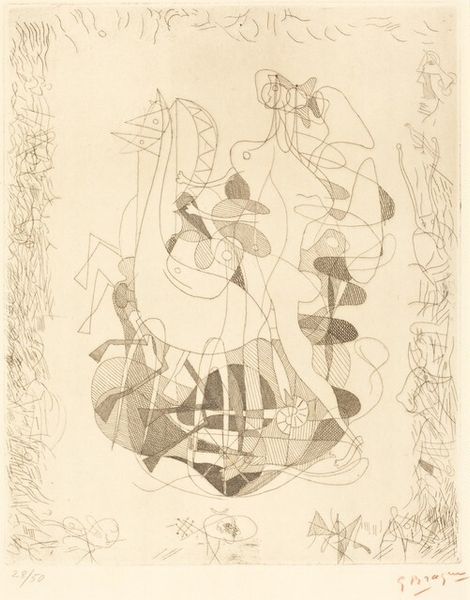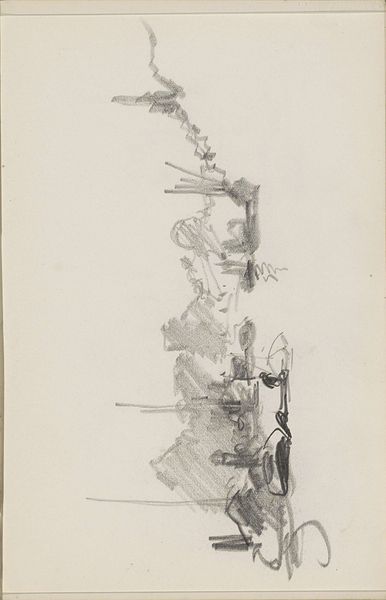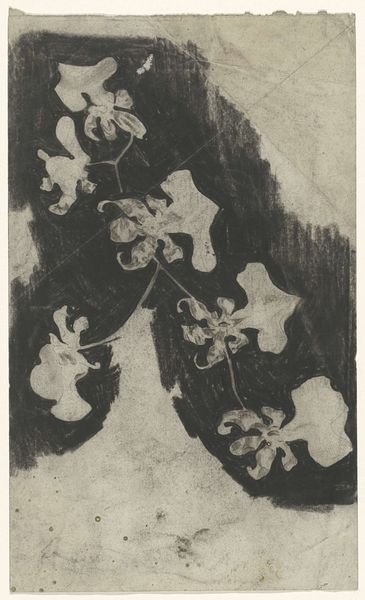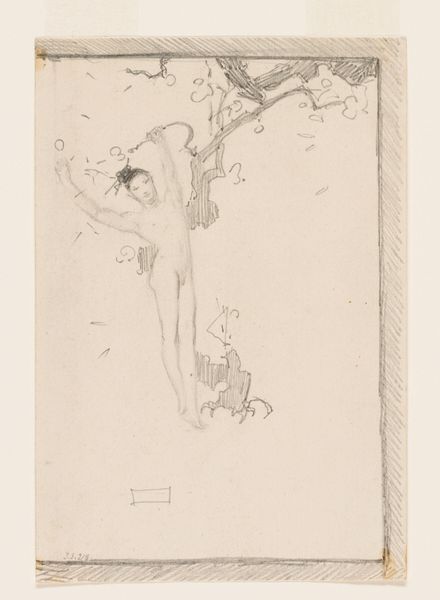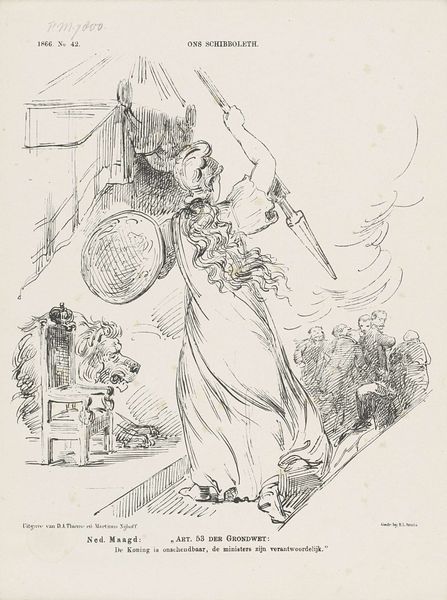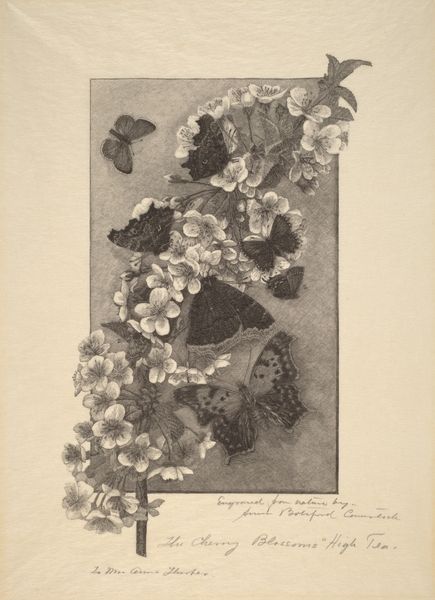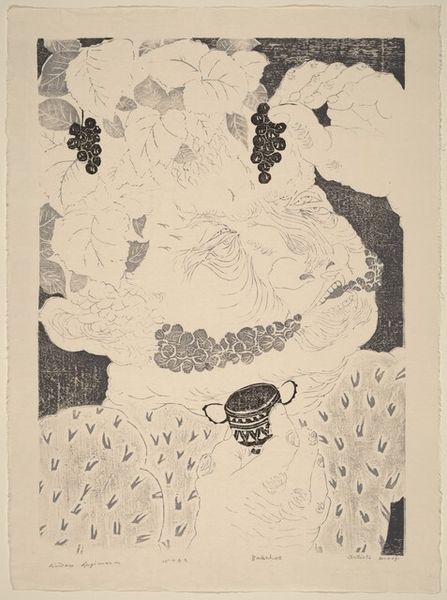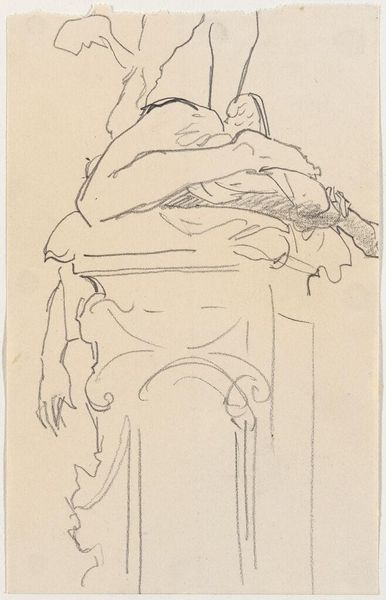
drawing, paper, ink
#
drawing
#
art-nouveau
#
ink drawing
#
paper
#
ink
#
realism
Dimensions: height 257 mm, width 205 mm
Copyright: Rijks Museum: Open Domain
Curator: Here we have "Plantstudie (brandnetel?)," a plant study executed sometime between 1874 and 1945. The piece is the work of Carel Adolph Lion Cachet. Editor: My immediate impression is one of stark contrasts, the detailed line work of the plant set against areas of deeply shadowed ink washes. It's quite striking. Curator: Absolutely. It's rendered in ink on paper, and while it's titled as possibly a study of a nettle, the plant itself suggests an interest in capturing natural forms through the lens of realism and emerging art-nouveau aesthetics. Editor: Do you think Cachet deliberately chose a nettle? The plant, often deemed undesirable, seems to play with notions of beauty and the value we place on it. Is this plant meant to represent those ostracized during its time? Curator: It's quite possible. Certainly the careful rendering elevates what might otherwise be considered a weed. But the play of light and shadow—the dark pools of ink—are really what draw the eye for me. The structure is very carefully laid out. Editor: I agree. The strong verticality of the stem, juxtaposed with the large leaves and delicate blossoms, creates an engaging visual tension. And those stark contrasts certainly have impact. Considering the period, I wonder if there was a political aspect influencing his compositions? Curator: Possibly. In the Netherlands at the time, debates around art's role in society were becoming quite pronounced, so Cachet must have made this choice to document something like a stinging nettle as an explicit aesthetic choice. Editor: An assertion of artistic freedom perhaps? To find beauty where others may not look? It's remarkable how a simple botanical study can open up so many avenues of interpretation. Curator: Indeed. I find myself returning to those lines, too - thin and unwavering. Editor: Ultimately, its careful attention to detail offers us an entry point to consider nature’s complexity, both visually and conceptually. Curator: Yes, and for me, its masterful composition keeps the focus on a harmonious unity despite all those questions about symbolism and social content.
Comments
No comments
Be the first to comment and join the conversation on the ultimate creative platform.
